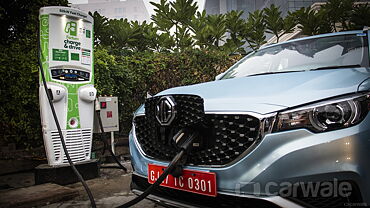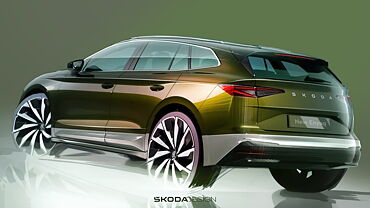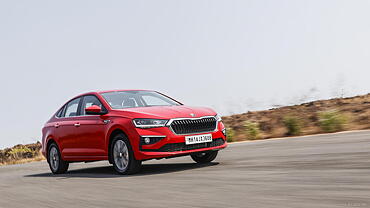
The legendary MG EX models
EX, short for experimental, was the working title given to all MG cars in their prototype phase, but some EXes have never been made into production models. In fact, after some early development prototypes, the EX designation of MG cars was associated with some remarkable racing machines which never directly lead to the development of road-going cars. Here’s a quick look at some of the most important MG EX cars.
MG EX120

The EX120 was at first a prototype being specifically designed to be a dedicated racecar based on the M-Type, but was quickly redesigned to be a land speed record car on the suggestion of prolific racing driver Captain George Eyston. Initial modification included an improved rear suspension, increased wheelbase for better handling at high speeds and a smaller 743cc engine than the standard 847cc unit.

Larger brakes from the 18/80, a four-speed transmission instead of the standard three-speed unit and a hand-built streamlined body were added to make it suitable for setting higher speeds. The 100mph/161kmph mark remained elusive till engineers tacked on an Eyston-designed supercharger to the car. George drove the EX120 to claim multiple speed records for a car powered by a sub-750cc engine, all done in the middle of winter at the banked oval track in Montlhéry, France.

Sadly, the EX120 perished after setting the record for sustained speeds of 100mph (101.01mph actually), catching fire in the cool-down lap forcing George to jump off the car at a claimed speed of 60mph (96kmph). The lessons learnt from the EX120 were implemented in MG roadcars well into the next two decades, including chassis forgings on the T-type cars and led to the development of the popular and successful C-Type sportscar.
MG EX127

The ‘Magic Midget’ was so named because it took broke new speed records using a puny 750cc engine. Development started immediately after the EX120 accident, it had a lower-slung, drag-efficient design just enough to accommodate the driver and the mechanicals to fit inside. The packaging was so tight that the transmission had to be offset from the engine and the driveshaft passed just on the left side of the driver, who himself was sitting just six inches off the ground.

Powered by an updated engine, as compared to the EX120, the new speed record car could achieve 110.28mph/177.47kmph without any forced induction. But both Cecil Kimber and George had the new target of achieving 120mph/193kmph. So on went a new Powerplus supercharger with pinion gears instead of chains connecting it with the engine and it achieved multiple speed records at the oval in Montlhéry. Eyston wanted more and took the car to the 11km long Pendine Sands beach for another attempt, but was still short of the mark by 1.61mph/2.59kmph.

The EX127 had a radical bodyshell redesign, this time with a completely enclosed cockpit and even more streamlining. The Magic Midget broke all records of its engine class, and achieved a sprint speed of 120.56mph/194.03kmph.

The Magic Midget wasn’t done though; Eyston sold the car to German racer Robert Kohlrausch who was fascinated by the car’s prowess and had even more ambitious plans for it. He asked MG to plonk in a new 746cc engine and Zoller supercharger from the Q-Type racecar which boosted the output of supercharger and achieved 140.6mph/226.27kmph on the Frankfurt Autobahn.
MG EX135

The need for speed was really ramping up by the end of the 1930s, the EX135 followed the streamlined, closed cockpit philosophy of the latter versions of the EX127 and bettered it in almost every way possible. Initially built using components from the MG K3 sportscar, with a larger (in comparison to the Midget cars) 1100cc, in-line six-cylinder and larger dimensions overall, the ‘Humbug’ achieved short sprint speeds of up to 128.7mph/207.12kmph in the hands of George Eyston.

But the story of the EX135 is more closely associated with the story of another racer, Major A T `Goldie’ Gardner. He had used a non-specialised K3 single-seater racecar to achieve 148mph/238kmph on the Autobahn and seen an Auto Union (what became Audi later) go 257mph/414kmph! He wanted a streamlined car to go faster and the now disused EX135 was the perfect starting point.

With a lighter body shell and improved engine, the EX135 set new sprint record of 203.9mph/328kmph for a car powered by an 110occ engine. The EX135 was then used for multiple speed record attempts with engines ranging from 350cc, 500cc, 750cc, 1500cc and 2000cc all driven by Gardner. The EX135’s exploits would only stop when Gardner retired in 1953.
MG EX181

The next record breaking EX car would have to wait till the repercussions of World War II subsided. The EX181 was tasked with breaking the ~204mph/328kmph record set by Gardner in 1939 and received some radical changes to do so. The record would be attempted at the Bonneville Salt Flats in Utah, USA, both because the track was more suited for achieving high speeds and because MG cars wanted to promote their performance credentials to a customer base which was warming up to affordable but capable British sportscars.

The EX181 was different from its predecessors as it was as custom a racecar as it could get. While it did use some parts from the gorgeous MGA sportscar, including its 1489cc, in-line four-cylinder engine, the changes were so radical that it couldn’t be associated too much with the road going car. The EX181 utilised the driver-in-front and flying saucer design philosophies for better packaging and low air resistance. Boosted with a supercharger and special fuel, the engine produced 290bhp, the tyres and wheels were specially designed not to explode at the 240mph+ speed MG was trying to achieve and a wind-tunnel was used to design cooling ducts for the engine and brakes without compromising aerodynamic drag.

The EX181, piloted by the late Stirling Moss, set a new record for cars powered by 1500cc engines at Bonneville on August 23, 1957. The 245.64mph/395.31kmph speed set by Moss and the EX181 would be one of the 10 records set that day. MG came back to Utah in 1959, with the EX181 now sporting a larger engine to compete in the 2000cc engine category. With 300bhp on tap and a tail-less design, the car set a new record at 254.91mph/410.23kmph. MG stopped participating in land speed record attempts after this point.
Sources - Silodrome, MGA Guru, MG Car Club 1 , 2 and 3, Wheelsage 1 and 2, Classic Cars Fandom 1 and 2
![MG Hector [2019-2021] Image MG Hector [2019-2021] Image](https://imgd.aeplcdn.com/272x153/cw/ec/36756/MG-Hector-Right-Front-Three-Quarter-166301.jpg?wm=0&q=80)















![MG Hector [2019-2021] Right Front Three Quarter MG Hector [2019-2021] Right Front Three Quarter](https://imgd.aeplcdn.com/199x112/cw/ec/36756/MG-Hector-Right-Front-Three-Quarter-166301.jpg?wm=0&q=80)
![MG Hector [2019-2021] Right Front Three Quarter MG Hector [2019-2021] Right Front Three Quarter](https://imgd.aeplcdn.com/199x112/n/cw/ec/36756/hector-exterior-right-front-three-quarter-166302.jpeg?q=80)
![MG Hector [2019-2021] Right Front Three Quarter MG Hector [2019-2021] Right Front Three Quarter](https://imgd.aeplcdn.com/199x112/n/cw/ec/36756/hector-exterior-right-front-three-quarter-166303.jpeg?q=80)
![MG Hector [2019-2021] Dashboard MG Hector [2019-2021] Dashboard](https://imgd.aeplcdn.com/199x112/n/cw/ec/36756/hector-interior-dashboard.jpeg?q=80)
![MG Hector [2019-2021] Steering Wheel MG Hector [2019-2021] Steering Wheel](https://imgd.aeplcdn.com/468x263/n/cw/ec/36756/hector-interior-steering-wheel.jpeg?q=80)


























